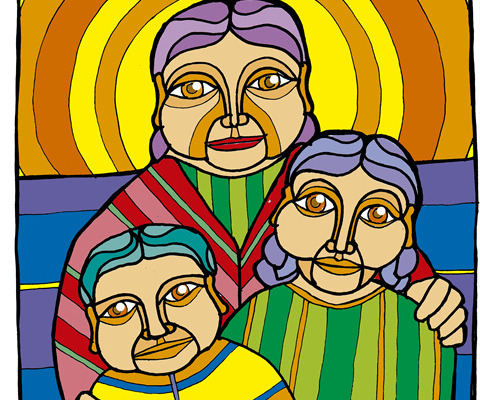Chapter: Digital technologies and people with disabilities
A frequently cited quote by Mary Pat Radabaugh, an ex-member of the IBM National Support Center for Persons with Disabilities, wraps up the importance of technology in empowering people with disabilities (National Council on Disability 1993):
“For most people, technology makes things easier. For people with disabilities, technology makes things possible.”
The acts and effects of marginalization and exclusion of people with disabilities are not only a human rights issue, which in itself is a sufficient reason for measures to be undertaken, but are accompanied by economic issues as well. It is easy to imagine what the impact would be on a nation’s economy if 15% of its population, which is the average share of people with disabilities on a global scale, face obstacles in receiving an education, contributing on the professional arena and achieving economic self-sufficiency. So, it is not just people’s rights and dignity that are undermined, but also a country’s welfare (WHO and World Bank 2011).
The rapid and mass developments in the sector of digital technologies have brought assistive technologies much closer to all users, adding specialized functionalities, which until recently were considered to be the reserved domain of users with disabilities only. Accessibility is a part of the general consumer and personal technology, making accessible technology far cheaper for all users, including persons with disabilities, but also seniors, people with low literacy, foreigners and others who do not identify as disabled. The lower cost of accessible technologies is particularly relevant for people with disabilities who had been purchasing excessively expensive specialized items. The accessibility features of widely used devices substantially lower the so called “othering” of students or employees with disabilities (Foley and Ferri 2012). This is particularly important for their inclusion and full participation in all life aspects.
Digital technologies provide an opportunity to persons with disabilities to obtain access to information and content in a format, which is understandable and preferable. Thus, for example, a person with visual impairments can use speech-to-text, a reading software as well as audio descriptions, a person with hearing impairments can use captions to understand the contents of a video, SMS or instant text messaging to communicate, and a person with mobility impairments can use voice recognition to operate and navigate a digital device. All means of communication – text, voice, imagery, gestures, sound – are used for accessing information, thus addressing longstanding barriers of communication and interaction.
Here are presented various disability categories, the barriers persons with such disability might be facing and examples of accessible technology solutions (Raja, 2016):
|
Disability Category
|
Barriers to participation
|
Accessible technology solutions
|
|
Visual Impairments (from total blindness to low vision)
|
· Reading print and writing
· Accessing visual information in print or audiovisual media
· Navigating new surroundings when all signage is in text
|
· Text-to-speech rendition and speech/voice output
· Braille displays
· Magnification
· Voice recognition
· Audio description of graphic and visual media
· Electronic audio signage
· GPS-facilitated navigation
· Optical character or image recognition
· Changing screen brightness, color contrast
|
|
Hearing impairment (from total to partial hearing loss)
|
· Hearing lessons, videos, warnings, and other auditory information in person or over audio media.
· Communicating with others including educators, peers and colleagues and others.
|
· Closed and open captioning, subtitles for videos, TV programming
· SMS, text messaging
· Text Telephone or Telecommunication Device for the Deaf (TTY/TDD), which allows text messaging over the phone line
· Telecommunications Relay Services which allow text to speck conversions through an operator
· Use of vibrations/text alerts instead of audio alerts
|
|
Speech impairments
|
· Communicating with others including educators, peers and colleagues and others.
|
· SMS, text messaging
· Synthesized voice output, text to speech functionality
· Use of virtual picture board and communication solutions
|
|
Physical Disability Loss of mobility, dexterity, and control over some body functions.
|
· Entering, navigating, and using buildings, classrooms, and other physical spaces.
· Using writing tools such as pens and pencils, keyboards, mouse.
|
· Voice recognition systems
· Adapted and virtual keyboards
· Joysticks and adapted mouse
· Use of eye-gaze and gestures to control devices
· Remote and online access to work, education, and other services
|
|
Cognitive Disability Includes a range of conditions which may impact a person’s memory, thinking and problem solving, visual, math, reading and language comprehension, ability to pay attention or follow instructions. Examples of underlying conditions are traumatic brain injury, learning disabilities, down syndrome, autism, cerebral palsy.
|
· Difficulty understanding, remembering, or following instructions.
· Difficult in comprehending textual information.
· May occur together with other limitations such as speech impairments or trouble with hand grip and movements.
· Difficulty in communicating or expressing thoughts and ideas.
|
· Text-to-speech rendition and speech/voice output
· Touch screen devices
· Mobile apps and online resources that mimic Augmentative and Alternative Communication (AAC) devices, electronic picture boards for communication
· Organization and memory aid tools such as online calendars, note taking, alerts
· GPS-facilitated navigation
· Use of multimedia to aid comprehension e.g., videos, graphics
|
|
Psychosocial Disability
|
· Need for flexible schedules
· Difficulty understanding, remembering, or following instructions.
· Inability to react and make appropriate decisions following information or instructions.
· Difficulty in communicating or expressing thoughts and ideas.
|
· Use of online communication, documentation, work tools to aid with flexible scheduling
· Organization and memory aid tools such as online calendars, note taking, alerts
|
This is a non-exhaustive list. It is important to note that there are both more types of disabilities, as well as barriers. In order to support inclusion, including through digital methods, a lot more still needs to be done.

